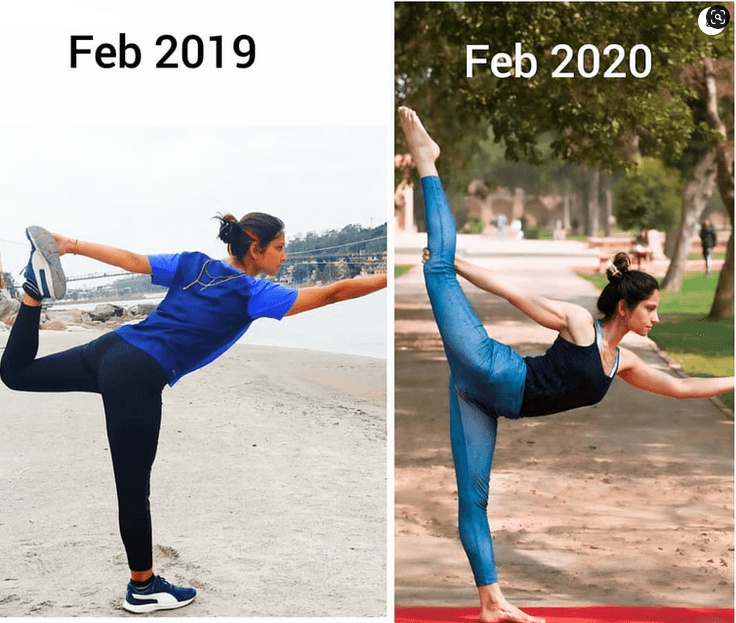These 5 Gender Differences Make Women More Flexible Than Man
According to the definition, Flexibility is the quality of muscles to bend easily without breaking. Humans are born with flexibility and that lose with time. According to Yoga, a stiff body is the result of toxins accumulated in the joints of the body which blocks the flow of prana or vital source that leads to the terminal illness. Being limber provides a better flow of prana, and supple joints, and is conducive to good health. As the coronavirus COVID-19 is a majorly spread disease all over the world and the comorbidity is the major risk factor of the disease, a healthy immunity becomes an essential part of lifestyle evidently. Due to the pandemic, people are now becoming more cautious about fitness and following many online Yoga programs for their mental and physical health.
Flexibility
“How long will it take to be flexible and open up my splits?” is one of the common questions I have been asked from many of my clients at the beginner level. With factors like genes, previous training and age, gender and hormones are also major factors to decide the efforts and duration of training for opening of muscles. I always answer them while keeping all factors in mind.
How Flexibility Works?
The nerve endings that relay all the information about the musculoskeletal system to the central nervous system are called Proprioceptors. The proprioceptor detects any changes in physical displacement (movement or position) and any changes in tension or force, within the body. Though there are many proprioceptors in the body, those related to stretching are found in tendons and in muscle fibers and are called Muscle Spindles and Golgi tendon organ (GTO)

When there is stretch in the muscle, the muscle spindle also stretches. Now the muscle spindle records the change in length of the muscle due to stretching and sends a signal to the brain through the spine. Now the brain comes to know that stretch is going out of the usual range of the muscle, so it sends a signal of Stretch Reflex (contract a stretched muscle) to your stretched muscle to prevent injury. Due to which the muscle follows the order of the brain and causing muscles to contract. That is why you feel this shaking of legs in deep stretches of your splits. The basic function of muscle spindle is to help maintain muscle tone and to protect the body from injury.
The Golgi tendon organ records the change in tension, and the rate of change in the tension, and sends signals to the spine to convey this information.’ When this tension exceeds a certain threshold it triggers a lengthening reaction that inhibits the muscles from contracting and causes relaxation, also called Autogenic Inhibition.
Both of the proprioceptors work perfectly with muscle lengthening and prevent injury during stretching of muscles. One of the reasons for holding a stretch for a prolonged period of time is that we hold the muscle in a stretched position, the muscle spindle habituates and reduces its signaling and register new length of muscles. This improves the flexibility and holding capacity of the stretch.
When the same process is working out in both male and female for muscle lengthening then why does everybody have this statement in their mind, that girls are more flexible than boys. Is this training or girls naturally bendy? Why do splits take less time for girls than boys, even though both are going through the same immense pain of stretching? All these questions have answers, let me explain this through science, research and experience.
How Gender Affects Flexibility?
What is The Best Time For Women to Improve Flexibility?
Females have this opportunity to improve their training skills according to their cycle. That’s why it is important for women to get trained and workout according to their menstrual cycle.

Estrogen has an immense effect on musculoskeletal function. It directly affects the structure and function of musculoskeletal tissues such as muscle, tendon, and ligament. In these musculoskeletal tissues, estrogen improves muscle mass and strength, and is also responsible for new bone formation. There are some days in the cycle when estrogen is at its peak and a woman can feel more strength in her bones. During these days she can be surprised by herself that she can lift more weights than usual. These estrogen boosted days are important for strength training and muscle building.
Similarly, Relaxin levels in the circulation rise after ovulation, during the second half of the menstrual cycle. At this stage it is used to relax the wall of the uterus by inhibiting contractions, and it also prepares the lining of the uterus for pregnancy. If pregnancy does not happen, relaxin levels drop again. So, these are the days when relaxin is high and can provide laxity in ligaments. These days will support female’s bodies to extend their limit and to stretch more.
What Are The Factors That Limits Flexibility?
The most common factors of limiting flexibility are bone structure, muscle mass, excess fatty tissue, connective tissue, physical injury or disability.
5 Important Advantages of Flexibility
- Delays physical deterioration associated with aging
- Decreased risk of injuries and helps muscle to relax after workout.
- Decrease pain and aches in muscles happen due to DOMS.
- Improve range of motion, hence enhanced ability to move joints freely and easily.
- Improve posture and appearance.
Where flexibility is enriched with so many benefits, hypermobility leads to many disadvantages. When connective tissues have too much elasticity then there is an increased risk of injury. Too much laxity in the body responsible for unstable joints that demands more control around joints. Muscles or fascia follow elasticity where the elongated muscle can come back to its original resting length again after a passive stretch, whereas ligaments follow the principle of plasticity where it assumes a new and greater length always after a passive stretch. Hypermobility puts a lot of strain on tendons, and ligaments, that occur micro-traumas, which can lead to more serious injury, such as joint dislocation, ligament strains and tears, or tendon inflammation. Hypermobility is not bad until and unless following strength training for joints. Strength training is always important with the flexibility to provide a better strengthening to muscles, tendons and ligaments and prevent instability of joints.
Though Gender is one of the important factors of flexibility, still there is a story of immense pain and struggle behind every flexible human. We all have to go through that tolerance of pain to perform a beautiful shape of Scorpion Bend or a Forearm Wheel. Practice is the only key for both sexes to improve the range of motion and joint mobility, sooner or later. Quarantine is the best time to improve your bends and to build your immunity while staying at home due to COVID-19.
Follow these simple 20 minutes stretching exercises for your splits flexibility at beginner level.
- M.Alter
ComponentContentVideos
...




